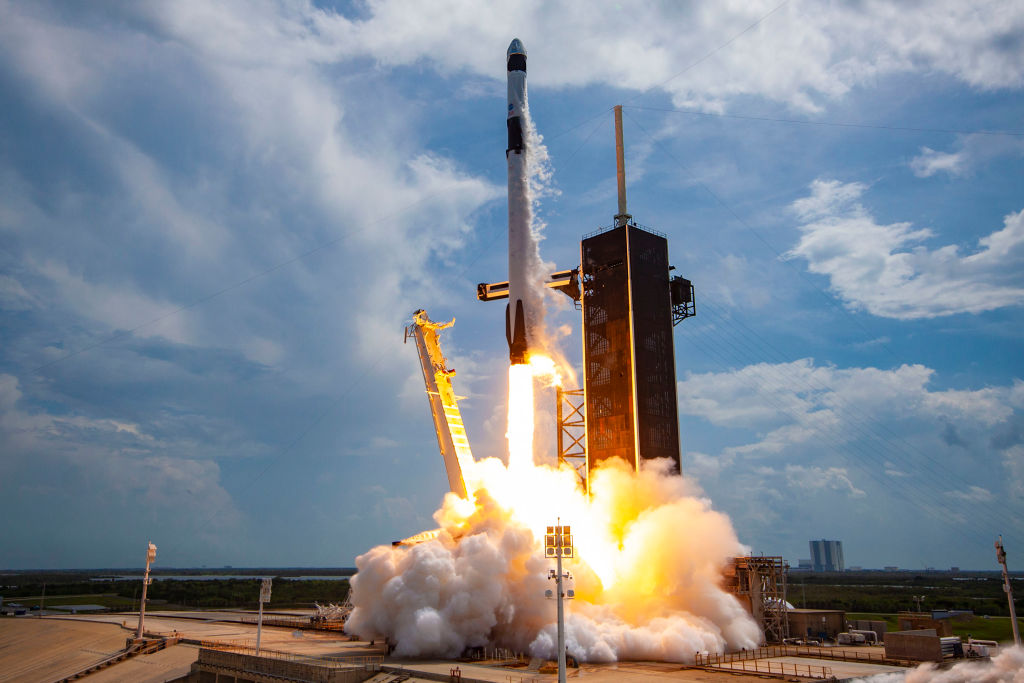
It’s perfectly fine that human beings want to travel in space. But we have to reckon with the fact that space doesn’t want anything to do with us. The exterior environment of space, of course, represents instantaneous death, what with the killing cold and the absence of any atmosphere. But even inside a spacecraft or a space station—cozy, pressurized, temperature-controlled, with food supplies, comfortable sleep pods, and a zero-g privy to take care of unavoidable essentials—the body doesn’t care for space.
Space radiation, which makes it through the walls of even the sturdiest ship, raises an astronaut’s lifetime risk of cancer. Just as problematic are the effects of what would seem to be the happiest part of living off-planet: weightlessness. Retired astronaut Scott Kelly, who spent close to a year aboard the International Space Station (ISS) in 2015 and 2016, once told TIME that he’s often asked whether the view or the absence of gravity is the best part of being in space. The view, he acknowledged, is magnificent, but it’s also like having an artistic masterpiece hanging in your living room—eventually you’d quit noticing it. But you never get tired of the ability to fly.
That ability comes at a price, though. Without gravity, the immune system weakens, the bones decalcify, muscles grow slack, and the very shape of the eyeball changes, becoming less spherical. (The only upside, as Kelly reports, is that without having to support the weight of the body for extended periods, the soles of feet lose their callouses.)
But of all of the challenges the body faces during extended periods in zero-g, perhaps the worst is the hit that the heart takes, as a study out this week reveals. The research, published in the journal Circulation, took an unfamiliar approach to investigating cardiac health, comparing the effect Kelly’s near-year in space had on his heart to similar changes experienced by endurance swimmer Benoit Lecomte, who swam 2,821 km (1,753 mi) from Japan to Hawaii from June to November 2018.
The two men had plenty in common. Kelly’s 340 days in space outpaced Lecomte’s 159 days in the water (he took breaks to rest and sleep aboard an escort sailboat), but both were marathoners. Both also exercised vigorously, with Kelly spending one to two hours every day working out and Lecomte spending six hours a day swimming. Most importantly, both experienced weightlessness, with Lecomte’s time in the water considered a good proxy for authentic zero-g.
Both, too, paid a price for their heroics. As the study showed, Kelly lost an average of .74 gm (.026 oz.) in mass per week from his heart’s left ventricle over the course of his time in space—almost identical to the .72 gm per week Lecomte lost. Both too lost mass in their heart’s diastolic diameter, Kelly’s falling from 5.3 cm to 4.6 cm and Lecomte’s from 5 cm to 4.7 cm. Neither Kelly nor Lecomte had any change in the left ventricle ejection fraction, or the amount of blood pumped out with each contraction.
The study’s implications are not all that troubling when it comes to long-distance swimmers since, well, how many people plan to butterfly stroke across the Pacific? But for a species that fancies itself a spacefaring one, the findings are bad news. ISS crew members follow a rigorous exercise regimen intended to counteract the effects of weightlessness. It helps: astronauts return home with stronger bones and more muscle mass than they would have if they spent their entire time aloft weightless and sedentary. The heart too can only benefit from from regular exercise—but clearly not enough.
There are, of course, technological solutions, like creating artificial, centrifugal gravity by rotating a spacecraft at the proper speed (see, e.g., The Martian and 2001: A Space Odyssey). But even our best and newest crewed spacecraft adhere to the capsule and habitation module model, with no great, rotating space liners even in the design pipeline. For now we remain newbies, novices, taking to space in our little pods without our gravity, and bringing our frail and fallible bodies with us. We’re getting by—kind of—and we’ll continue to. But even 60 years after Yuri Gagarin became the first human being in space, we still have an enormous amount of work to do before the cosmos become anything like a home. Earth—familiar as it may be, unglamorous as it may seem—remains our place in the cosmos.
This story originally appeared in TIME Space, our weekly newsletter on all things related to the cosmos. You can sign up here.
More Must-Reads From TIME
- The 100 Most Influential People of 2024
- Coco Gauff Is Playing for Herself Now
- Scenes From Pro-Palestinian Encampments Across U.S. Universities
- 6 Compliments That Land Every Time
- If You're Dating Right Now , You're Brave: Column
- The AI That Could Heal a Divided Internet
- Fallout Is a Brilliant Model for the Future of Video Game Adaptations
- Want Weekly Recs on What to Watch, Read, and More? Sign Up for Worth Your Time
Write to Jeffrey Kluger at jeffrey.kluger@time.com